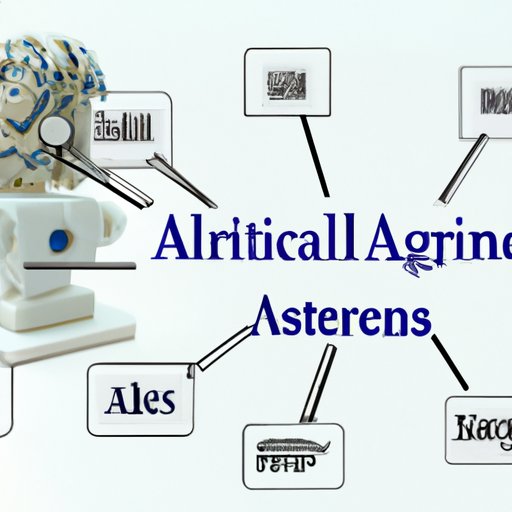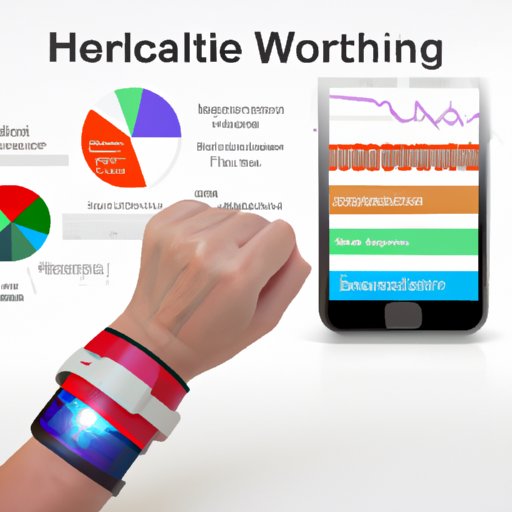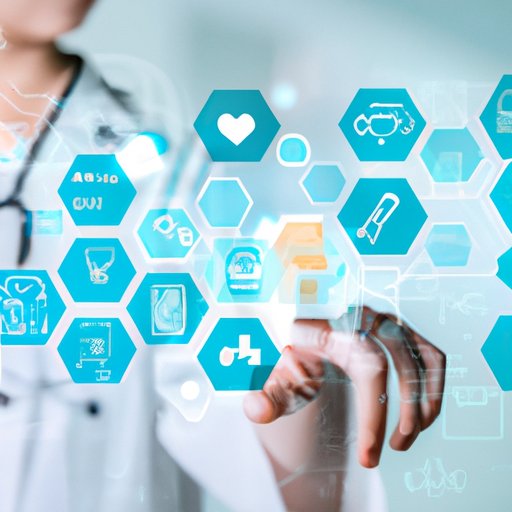Introduction
Technology has become increasingly integrated into healthcare over the past decade, providing a range of benefits to patients, practitioners, and organizations. From telemedicine to electronic health records (EHRs) to artificial intelligence (AI), technology is transforming the way healthcare is delivered, managed, and monitored. In this article, we explore the different types of technology being used in healthcare today and discuss their benefits, challenges, and potential.
Exploring the Impact of Telemedicine on Healthcare
Telemedicine is a type of virtual healthcare that enables remote diagnosis and treatment of patients. Through the use of video and audio conferencing, telemedicine allows healthcare providers to provide medical advice, diagnosis, and treatment to patients without the need for in-person visits. This can be a useful tool for those who have difficulty accessing traditional healthcare services due to geographical or financial constraints.
There are numerous benefits of telemedicine. For one, it reduces the amount of time and money spent on travel for both patients and practitioners. Additionally, it reduces wait times for appointments, allowing patients to receive timely care and reducing the burden on healthcare systems. Finally, it offers increased access to specialized care for those living in rural or underserved areas, allowing them to benefit from the expertise of practitioners located elsewhere.
However, there are also some challenges and limitations associated with telemedicine. For one, it requires reliable internet access, which may not always be available in certain regions. Additionally, it can be difficult to accurately diagnose and treat patients remotely, as practitioners cannot physically examine the patient. Finally, the cost of setting up and maintaining a telemedicine system can be prohibitively expensive for some healthcare organizations.

Examining the Benefits of Electronic Health Records
Electronic health records (EHRs) are digital versions of paper-based medical records. They contain detailed information about a patient’s medical history, including diagnoses, medications, treatments, and other relevant data. EHRs allow healthcare providers to quickly and easily access a patient’s medical information, streamlining the process of diagnosis and treatment.
The benefits of EHRs are numerous. For one, they reduce paperwork and administrative costs, freeing up resources for other activities. Additionally, they improve accuracy and reduce errors, as all data is stored electronically and can be easily accessed by authorized personnel. Furthermore, EHRs enable better communication between healthcare providers, allowing for more informed decisions about a patient’s care.
However, there are also some challenges and limitations associated with EHRs. For one, they require a significant investment of time and money to set up and maintain. Additionally, they carry the risk of data breaches, as unauthorized individuals may be able to access sensitive patient information. Finally, they can lead to physician burnout, as healthcare providers may feel overwhelmed by the amount of data they must manage.

Assessing the Role of Artificial Intelligence in Diagnosis and Treatment
Artificial intelligence (AI) is a type of computer technology that can be used to automate tasks and make decisions. In healthcare, AI can be used to analyze large amounts of data in order to identify patterns and trends, as well as to diagnose and treat diseases. AI can also be used to automate administrative tasks, such as scheduling appointments and managing billing.
The benefits of AI in healthcare are numerous. For one, it can help to reduce errors and improve accuracy, as AI systems are able to process large amounts of data quickly and accurately. Additionally, AI can help to reduce costs, as it can automate many administrative tasks. Finally, AI can help to improve patient outcomes, as it can detect patterns in data that may otherwise go unnoticed.
However, there are also some challenges and limitations associated with AI in healthcare. For one, it requires a large amount of data in order to function properly, which may not always be available. Additionally, AI systems can be prone to bias, as they may be trained on datasets that are not representative of the population. Finally, AI technology is still developing and may not be able to keep up with rapid changes in the healthcare industry.

Analyzing the Use of Wearable Technology in Monitoring Patient Health
Wearable technology is a type of device that is worn on the body and used to track and monitor various aspects of a person’s health. These devices can measure heart rate, sleep quality, exercise intensity, and other metrics, and can send this data to healthcare providers for analysis. This can be useful for monitoring long-term conditions, such as diabetes or hypertension, as well as for identifying potential risks and warning signs of illness.
The benefits of wearable technology are numerous. For one, it allows patients to track their health in real time, enabling them to take proactive steps to improve their wellbeing. Additionally, it enables healthcare providers to monitor their patients remotely, allowing for more accurate diagnoses and treatments. Finally, it can help to reduce costs, as wearable technology can be used to detect and prevent illnesses before they become serious.
However, there are also some challenges and limitations associated with wearable technology. For one, it requires users to wear the device at all times, which may be uncomfortable or inconvenient. Additionally, it can be difficult to accurately interpret the data collected by the device, as it may be subject to user error or environmental factors. Finally, the data collected by these devices can be vulnerable to hacking or misuse, leading to privacy concerns.
Investigating the Use of Robotics in Surgery
Robotics is a type of technology that is used to automate physical tasks. In healthcare, robotics can be used to perform surgical procedures, allowing for more precise and less invasive operations. Robotics can also be used to assist with rehabilitation and physical therapy, helping patients to recover more quickly and effectively.
The benefits of robotics in surgery are numerous. For one, it can reduce the amount of time spent in the operating room, leading to shorter hospital stays and lower costs. Additionally, it can increase accuracy and precision during surgery, resulting in better patient outcomes. Finally, it can reduce the risk of infection, as robotic tools are sterilized between uses.
However, there are also some challenges and limitations associated with robotics in surgery. For one, it requires a significant investment of time and money to set up and maintain a robotic system. Additionally, it can be difficult to integrate robotics into existing healthcare systems, as the two may not be compatible. Finally, there is a risk of technical failure, as robots may malfunction or give inaccurate readings.
Reviewing the Potential of Big Data Analytics in Healthcare
Big data analytics is a type of technology that is used to analyze large amounts of data in order to identify patterns and trends. In healthcare, big data analytics can be used to improve diagnosis and treatment, as well as to detect and prevent illnesses. It can also be used to reduce costs, as it can help to identify inefficiencies and optimize processes.
The benefits of big data analytics in healthcare are numerous. For one, it can help to improve patient outcomes, as it can identify potential risks and warning signs of illness early on. Additionally, it can help to reduce costs, as it can identify opportunities for savings. Finally, it can help to improve communication between healthcare providers, as it can provide insights into the effectiveness of treatments and interventions.
However, there are also some challenges and limitations associated with big data analytics. For one, it requires a significant investment of time and money to set up and maintain. Additionally, it can be difficult to interpret the data generated, as it may be subject to user error or environmental factors. Finally, there is a risk of data breaches, as unauthorized individuals may be able to access sensitive patient information.
Conclusion
Technology has become increasingly integrated into healthcare over the past decade, offering a range of benefits to patients, practitioners, and organizations. From telemedicine to electronic health records (EHRs) to artificial intelligence (AI) to wearable technology to robotics to big data analytics, technology is transforming the way healthcare is delivered, managed, and monitored. While technology can offer numerous benefits, it also comes with its own set of challenges and limitations. As such, it is important to consider the potential benefits and drawbacks of each technology before implementing it in a healthcare setting.
In conclusion, technology has the potential to revolutionize healthcare by improving outcomes, reducing costs, and increasing access to care. However, it is important to remember that technology is only one part of the equation; healthcare providers must still provide quality care and ensure that patients’ needs are met. By carefully considering the potential benefits and risks of each technology, healthcare providers can ensure that they are making the best decisions for their patients.
(Note: Is this article not meeting your expectations? Do you have knowledge or insights to share? Unlock new opportunities and expand your reach by joining our authors team. Click Registration to join us and share your expertise with our readers.)
